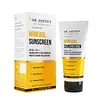What's inside
What's inside
 Key Ingredients
Key Ingredients

 Benefits
Benefits

 Concerns
Concerns

 Ingredients Side-by-side
Ingredients Side-by-side

Water
Skin ConditioningZinc Oxide
Cosmetic ColorantC12-15 Alkyl Benzoate
AntimicrobialIsostearic Acid
CleansingPolyhydroxystearic Acid
EmulsifyingCyclopentasiloxane
EmollientPEG/PPG-18/18 Dimethicone
EmulsifyingCaprylyl Methicone
Skin ConditioningPEG-12 Dimethicone/PPG-20 Crosspolymer
Silica
AbrasiveGlycerin
HumectantDimethicone/Vinyl Dimethicone Crosspolymer
Skin ConditioningCetyl PEG/PPG-10/1 Dimethicone
EmulsifyingSodium Chloride
MaskingPolymethylsilsesquioxane
Caprylyl Glycol
EmollientMethylpropanediol
SolventDidecyldimonium Chloride
EmulsifyingPolyquaternium-80
CleansingXanthan Gum
EmulsifyingMagnesium Aluminum Silicate
AbsorbentWater, Zinc Oxide, C12-15 Alkyl Benzoate, Isostearic Acid, Polyhydroxystearic Acid, Cyclopentasiloxane, PEG/PPG-18/18 Dimethicone, Caprylyl Methicone, PEG-12 Dimethicone/PPG-20 Crosspolymer, Silica, Glycerin, Dimethicone/Vinyl Dimethicone Crosspolymer, Cetyl PEG/PPG-10/1 Dimethicone, Sodium Chloride, Polymethylsilsesquioxane, Caprylyl Glycol, Methylpropanediol, Didecyldimonium Chloride, Polyquaternium-80, Xanthan Gum, Magnesium Aluminum Silicate
Water
Skin ConditioningEthylhexyl Methoxycinnamate
UV AbsorberButyl Methoxydibenzoylmethane
UV AbsorberBenzophenone-3
UV AbsorberPhospholipids
Skin ConditioningButylene Glycol
HumectantIsododecane
EmollientDicaprylyl Carbonate
EmollientGlycerin
HumectantTitanium Dioxide
Cosmetic ColorantSilica
AbrasiveDimethicone
EmollientCaprylic/Capric Triglyceride
MaskingGlyceryl Citrate/Lactate/Linoleate/Oleate
EmulsifyingPropanediol
SolventNiacinamide
SmoothingAscorbyl Glucoside
AntioxidantTocopheryl Acetate
AntioxidantFructooligosaccharides
HumectantBeta Vulgaris Root Extract
Skin ConditioningTerminalia Ferdinandiana Fruit Extract
AntioxidantCitrus Sinensis Fruit Extract
AntioxidantSodium Gluconate
Skin ConditioningXanthan Gum
EmulsifyingPolyacrylate Crosspolymer-6
Emulsion StabilisingPolyacrylate-13
Polyisobutene
Polysorbate 20
EmulsifyingPhenoxyethanol
PreservativeEthylhexylglycerin
Skin ConditioningOctenidine Hcl
AntimicrobialWater, Ethylhexyl Methoxycinnamate, Butyl Methoxydibenzoylmethane, Benzophenone-3, Phospholipids, Butylene Glycol, Isododecane, Dicaprylyl Carbonate, Glycerin, Titanium Dioxide, Silica, Dimethicone, Caprylic/Capric Triglyceride, Glyceryl Citrate/Lactate/Linoleate/Oleate, Propanediol, Niacinamide, Ascorbyl Glucoside, Tocopheryl Acetate, Fructooligosaccharides, Beta Vulgaris Root Extract, Terminalia Ferdinandiana Fruit Extract, Citrus Sinensis Fruit Extract, Sodium Gluconate, Xanthan Gum, Polyacrylate Crosspolymer-6, Polyacrylate-13, Polyisobutene, Polysorbate 20, Phenoxyethanol, Ethylhexylglycerin, Octenidine Hcl
Ingredients Explained
These ingredients are found in both products.
Ingredients higher up in an ingredient list are typically present in a larger amount.
Glycerin is already naturally found in your skin. It helps moisturize and protect your skin.
A study from 2016 found glycerin to be more effective as a humectant than AHAs and hyaluronic acid.
As a humectant, it helps the skin stay hydrated by pulling moisture to your skin. The low molecular weight of glycerin allows it to pull moisture into the deeper layers of your skin.
Hydrated skin improves your skin barrier; Your skin barrier helps protect against irritants and bacteria.
Glycerin has also been found to have antimicrobial and antiviral properties. Due to these properties, glycerin is often used in wound and burn treatments.
In cosmetics, glycerin is usually derived from plants such as soybean or palm. However, it can also be sourced from animals, such as tallow or animal fat.
This ingredient is organic, colorless, odorless, and non-toxic.
Glycerin is the name for this ingredient in American English. British English uses Glycerol/Glycerine.
Learn more about GlycerinSilica, also known as silicon dioxide, is a naturally occurring mineral. It is used as a fine, spherical, and porous powder in cosmetics.
Though it has exfoliant properties, the function of silica varies depending on the product.
The unique structure of silica enhances the spreadability and adds smoothness, making it a great texture enhancer.
It is also used as an active carrier, emulsifier, and mattifier due to its ability to absorb excess oil.
In some products, tiny microneedles called spicules are made from silica or hydrolyzed sponge. When you rub them in, they lightly polish away dead skin layers and enhance the penetration of active ingredients.
Learn more about SilicaWater. It's the most common cosmetic ingredient of all. You'll usually see it at the top of ingredient lists, meaning that it makes up the largest part of the product.
So why is it so popular? Water most often acts as a solvent - this means that it helps dissolve other ingredients into the formulation.
You'll also recognize water as that liquid we all need to stay alive. If you see this, drink a glass of water. Stay hydrated!
Learn more about WaterXanthan gum is used as a stabilizer and thickener within cosmetic products. It helps give products a sticky, thick feeling - preventing them from being too runny.
On the technical side of things, xanthan gum is a polysaccharide - a combination consisting of multiple sugar molecules bonded together.
Xanthan gum is a pretty common and great ingredient. It is a natural, non-toxic, non-irritating ingredient that is also commonly used in food products.
Learn more about Xanthan Gum